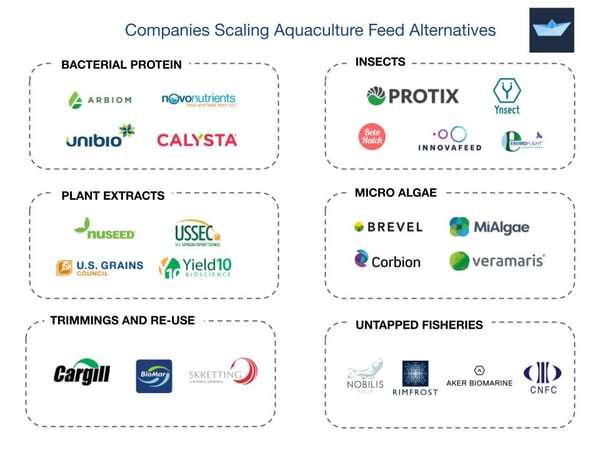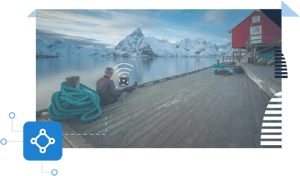Expediting the Science of Aquaculture Feed is Possible: Here's how
The aquaculture feed landscape is expansive, and even with significant advancements, a wealth of research opportunities remain. These research topics hold promise of significantly influencing and enhancing the feed sector in various ways for the future of sustainable aquaculture.
Key areas are ripe for exploration and innovation. These include (to name a few examples) researching optimal fatty acid composition, functional ingredient inclusion, digestibility and nutrient utilization, optimal sustainable alternative protein sources, feed safety and removal of contaminants, life-stage specific nutrition, and so much more.
All Eyes on Alternative Feed Ingredients
Right now, the feed industry's future hinges on sustainability. With fisheries dwindling and raw material markets becoming more unpredictable, the focus has shifted to sustainable ingredient alternatives. These aren't merely substitutes; they aim to ensure safer feeds, reduce contaminants, and provide nutrition tailored to aquatic species at different life stages.
As fisheries teeter on the edge and raw material supply becomes uncertain, seeking alternative ingredients is no longer just about advancement—it's essential. To secure the seafood industry's future, we must prioritize research and embrace sustainable innovations.
The Urgent Case for Accelerating Science
The aquaculture industry is currently facing a whirlwind of changes, not just from within but also influenced by global events. The fluctuations in commodity markets are a clear sign of the challenges companies face, pushing them to reevaluate and validate their products. This year has been particularly telling, with numerous reports highlighting the urgent need for accelerated research in crucial areas of fish feed.
Here's a closer look at some recent headlines affecting the feed industry:
The Peru Fisheries Dilemma: As a major contributor to the global fish oil supply, Peru is navigating a storm of challenges. The impending El Niño and rampant overfishing have put its fisheries in a tight spot. This is compounded by stiff competition from nations like China and Chile, who are offering fishmeal at competitive prices. On top of that, rising energy and labor expenses are further stressing the industry.
Skyrocketing Fish Meal Costs: The year 2023 has seen fish meal prices soar, marking an 18% increase from the previous year. This isn't just a number; it's a reflection of the industry's instability and its potential global impact.
The Escalating Prices of Raw Materials: Key ingredients, such as soy, integral to many feed formulations, are witnessing a price surge. The FAO has noted a significant 16.5% rise in soybean meal costs. This uptick can be attributed to a growing demand for fish feed, ongoing supply chain issues due to the pandemic, and the relentless climb in energy prices.
These events are not mere blips on the radar; they represent a broader shift in the industry. They emphasize the critical need for forward-thinking, research, and flexibility in the dynamic realm of aquaculture.
5 Year Fishmeal Monthly Price - US Dollars per Metric Ton

"Fishmeal Monthly Price - US Dollars per Metric Ton" IndexMundi, 2023, https://www.indexmundi.com/commodities/?commodity=fish-meal&months=60. Accessed 8-18-2023.
Alternative Feed Ingredient Solutions
The future of aquaculture feed is brimming with promise, thanks to a wave of pioneering companies innovating new ingredient alternatives. The array of solutions spans from microbial and fermentation, to insect-derived proteins, algae innovations, and plant-based proteins. Additionally, there's a focus on sustainable practices like repurposing trimmings and exploring under explored fisheries. However, regardless of their innovative approaches, these companies face a universal hurdle: the challenge of effectively executing and validating their product research.

Common Hurdles When Conducting Research on Feed Alternatives
While all these companies are clearly creating transformative change across fish feed solutions, several challenges continue to stand in the way of their evolution. From financial hurdles to regulatory complexities, here's a dive into the common obstacles that the sector must navigate:
Funding Constraints: The exploration of alternative fish feeds demands substantial financial resources. Many companies hesitate to fund such research due to the nascent stage of the alternative fish feed market and the uncertainty surrounding the success of a novel product.
Lack of Data: Comprehensive information regarding the specific nutritional needs of various fish species and the efficacy of diverse feed components is scarce. This paucity of data complicates the formulation and assessment of innovative feed solutions.
Customer Time to Validation: One of the primary challenges in fish farming is the extended duration required to raise fish to maturity. This prolonged period means that farmers have to wait a significant amount of time before they can observe the results of any changes in feed.
Complexity of Fish Farming Industry: The multifaceted nature of the aquaculture sector presents challenges. Numerous variables can influence the effectiveness of a particular feed, making it challenging to execute controlled experiments and discern the impact of individual feed components.
Regulatory Hurdles: The fish feed industry is subject to a myriad of regulations that oversee its production and distribution. Navigating these regulatory frameworks can pose challenges to the introduction and promotion of new feed variants.
Time to Market: The journey from conceptualizing to launching a new fish feed variant in the market can span several years. This extended timeline is attributed to the need for rigorous research, exhaustive testing, and securing regulatory endorsements.
Data Management & Analysis: Collecting, managing, and interpreting vast amounts of data from research trials necessitate advanced technological tools and specialized expertise. Ensuring accurate data collection, secure storage, and insightful analysis is pivotal for the success of feed research.
Overcoming Common Research Challenges for the Fish Feed Industry
Navigating the intricate maze of challenges in the aquaculture feed industry might seem like a Herculean task, but the good news is that tangible solutions are within reach. Manolin's Data Intelligence is at the forefront of this transformative journey, offering a platform for those aquaculture suppliers grappling with these very issues.
Our cutting-edge Harpoon platform is revolutionizing the way research is conducted. By significantly reducing the time required for in-field research studies, we're empowering companies to proactively evaluate their products, understanding their real-world impact on fish farms. A testament to our innovative approach is our recent collaboration with Veramaris. Together, we embarked on a groundbreaking study, delving into the effectiveness of EPA + DHA at a commercial scale in salmon farming.
For those eager to gain a deeper understanding of our pioneering work, we have an exciting opportunity lined up.

Join us at Aqua Nor 2023, where we'll be shedding light on our findings and their implications for the industry. Mark your calendars for Wednesday, August 23rd, at 11:20 am CEST, where our CEO (Tony Chen) presents his talk, "A Commercial Scale Analysis of Production Performance of Different EPA + DHA Levels in Norwegian Salmon", an enlightening exploration of our joint study with Veramaris.
Don't miss out on this chance to witness the future of aquaculture research in action!